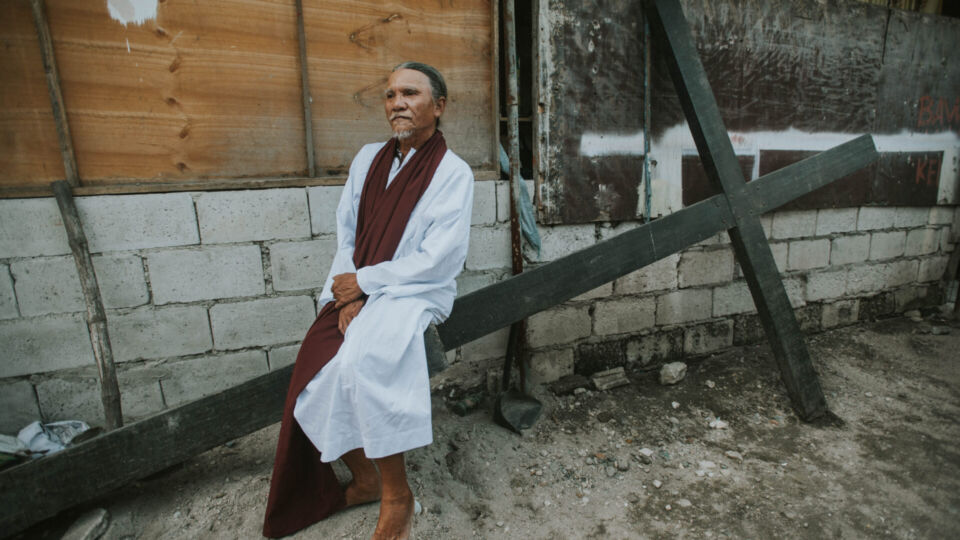On the morning of Good Friday on April 7, in the barangay (village) of San Pedro Cutud in San Fernando, Pampanga, Philippines, Ruben Enaje will don a robe and tunic, his long locks curled and ready to receive the thorny crown made of makabuhay, a local medicinal vine.
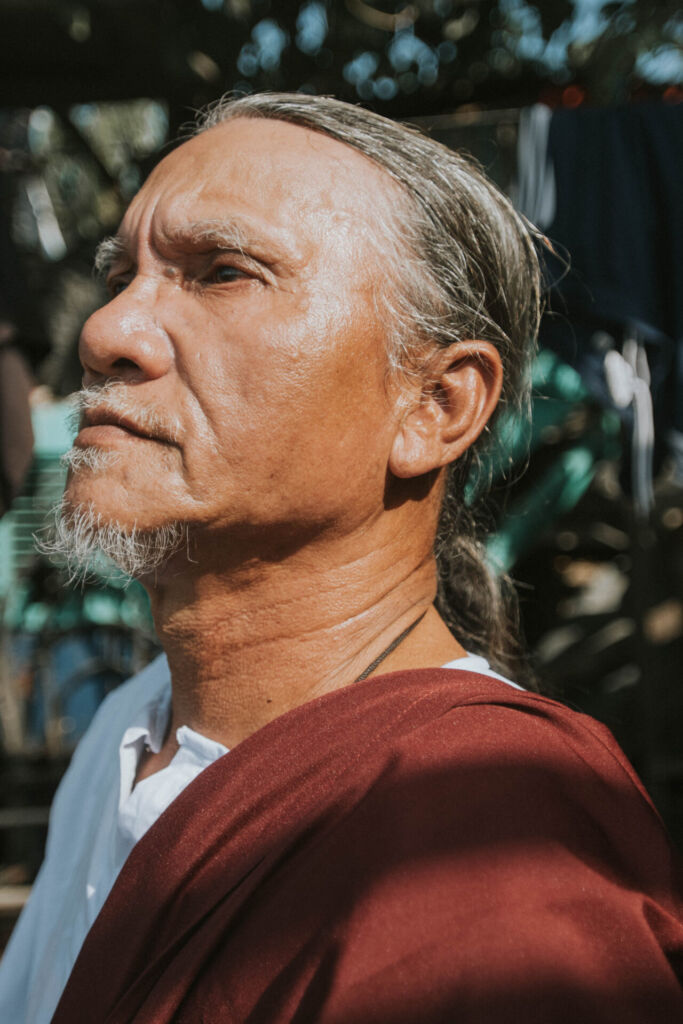
He will then begin his ascent, a 1.7-kilometer walk up a hill, trudging as he bears a long and heavy wooden cross — 15 feet and 37 kilograms, to be exact — on his back, its end dragging against the ground.
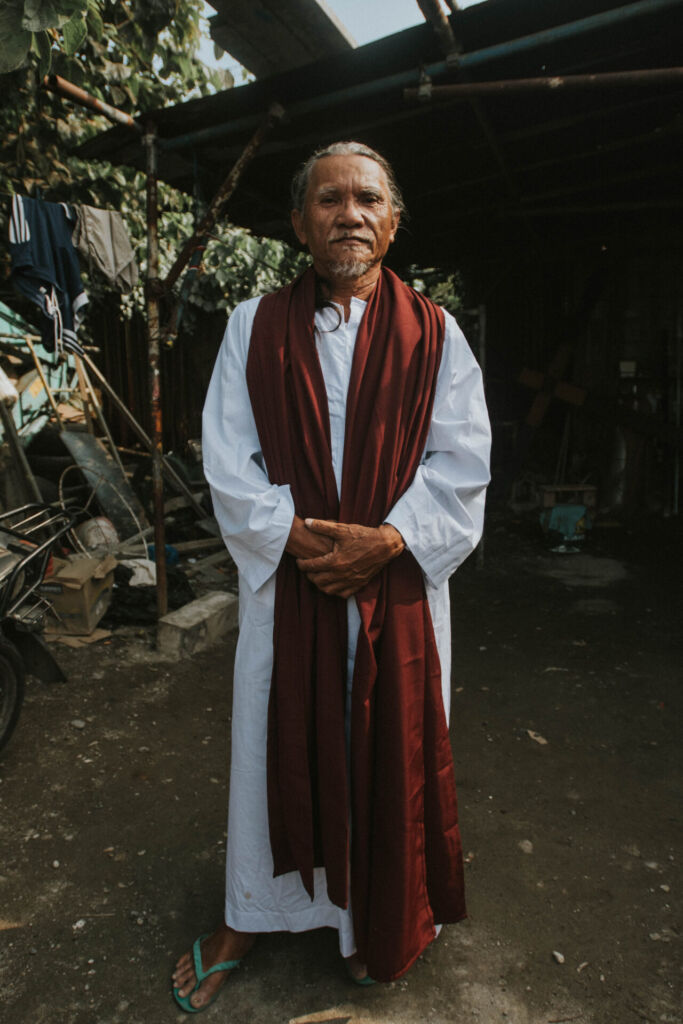
Once Enaje reaches the hill, an army of men dressed as Roman centurions, clad in metal armor and red polyester, will begin to mock and beat him, whipping him five times across his back. They will tear off his top clothing and proceed to lay him down on the cross he just carried, where a special set of three-inch nails await him: two for the hands and two for the feet. The nails will pierce through flesh and dig into the wood.
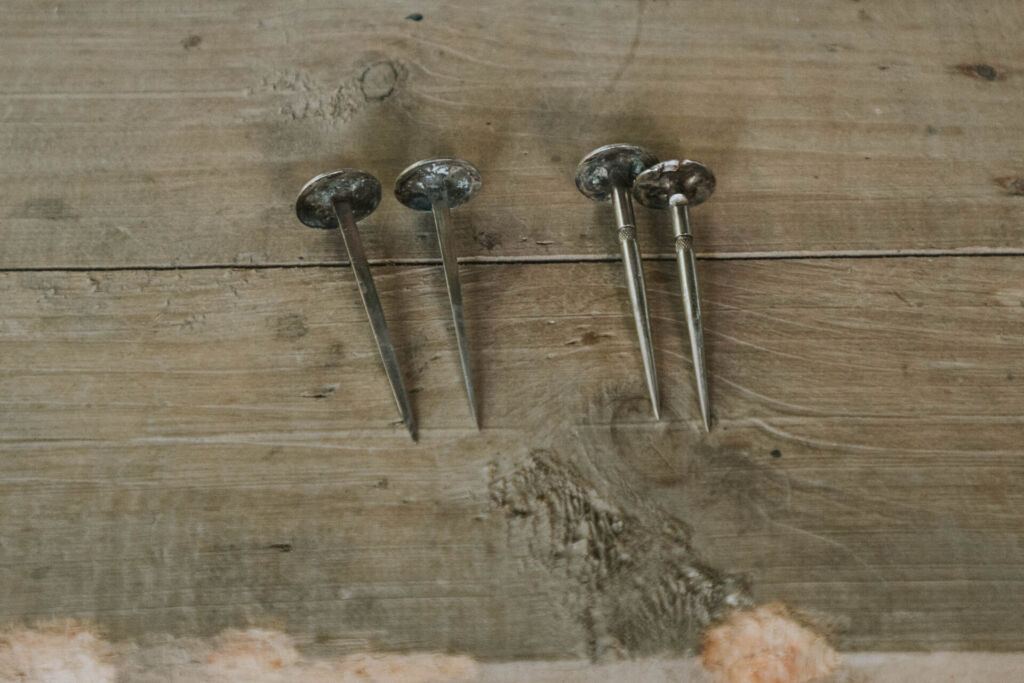
After it is done, the cross will be raised up, and Enaje will directly face the rays of the sun, with thousands of spectators and a swarm of media men from below looking on.
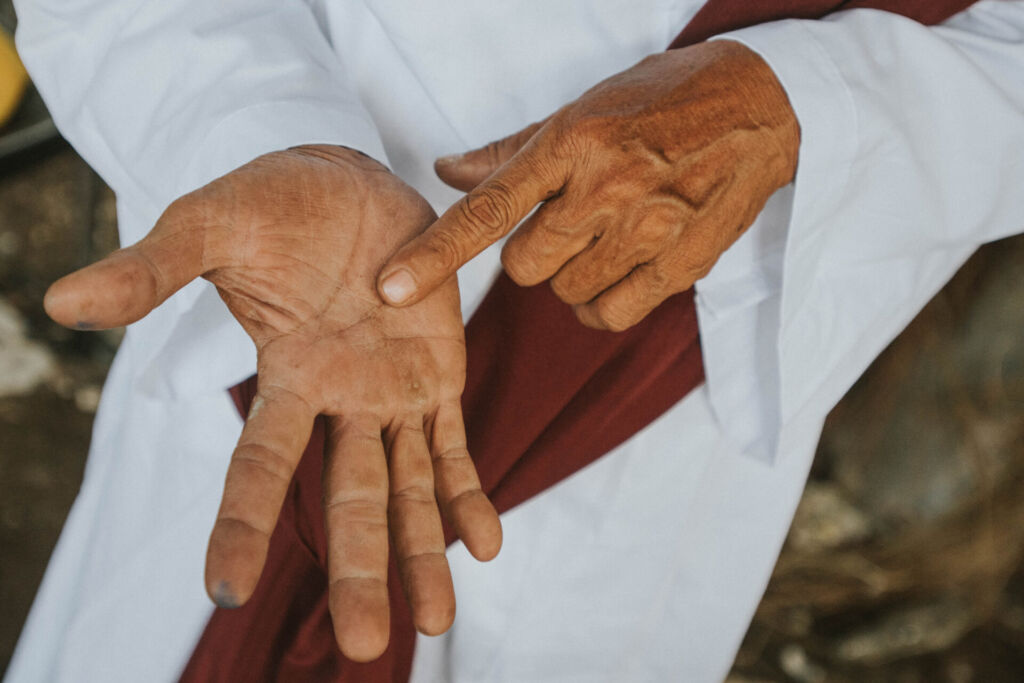
Enaje points to where the nails are driven on his palms. Photos by Gerald Gloton
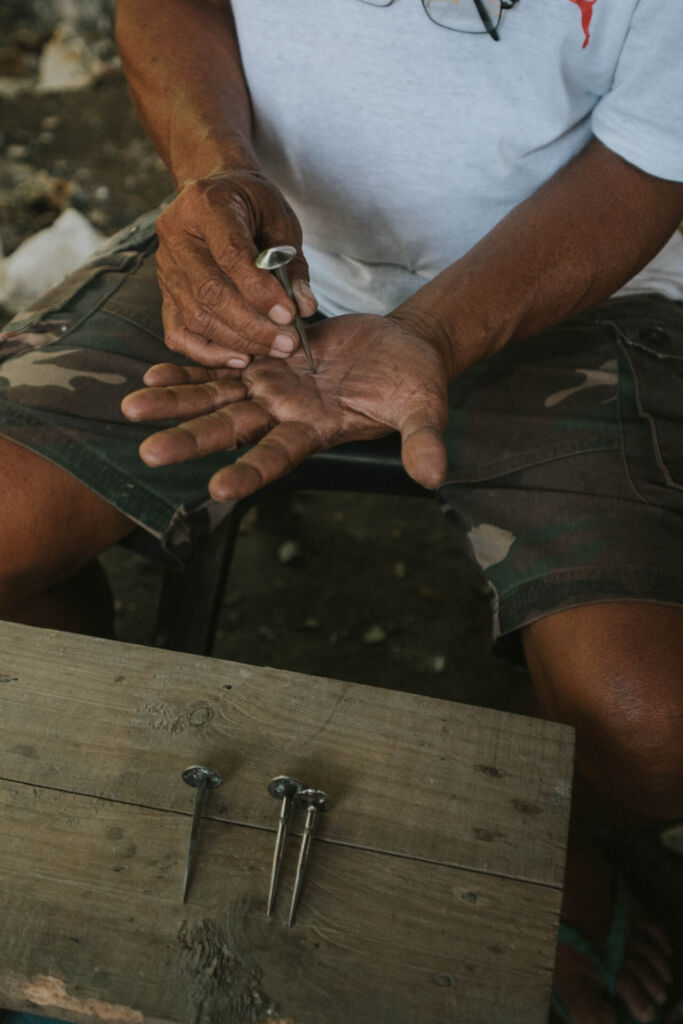
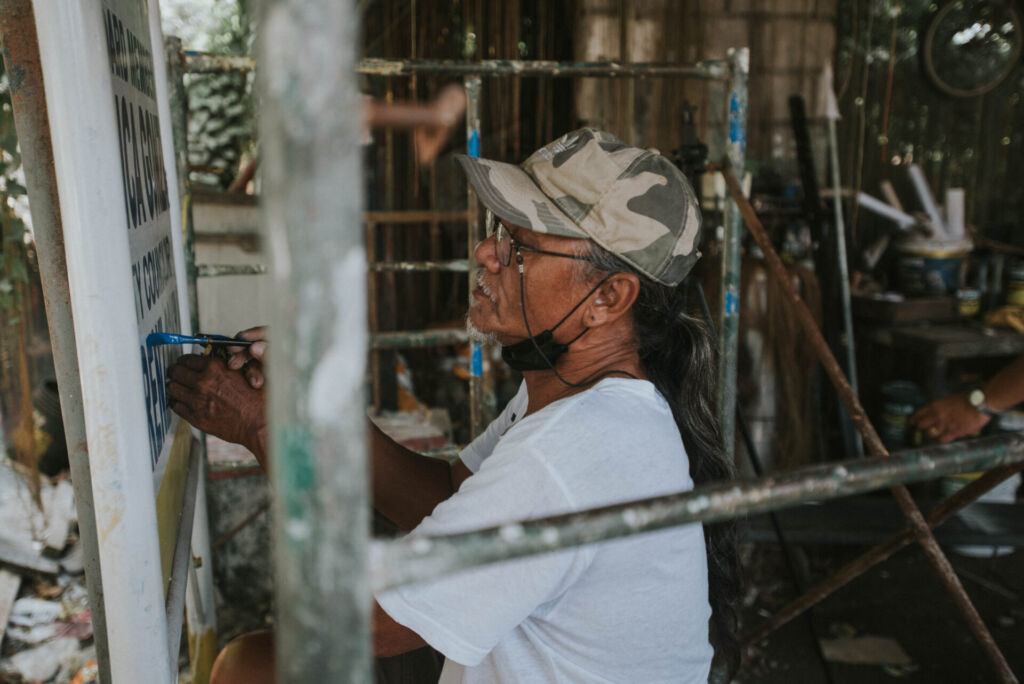
While Enaje works today as a sign maker, during Holy Week, he transforms into one of the Philippines’ longest-running and most recognizable depictions of Christ. The painful re-enactment of Jesus’ crucifixion and death on the cross is a yearly tradition to which Enaje devotes himself as an act of penance during Lent. Although Enaje joins other penitents, the 62-year-old has been doing this the longest. This year will be his 34th time being crucified — and it could possibly be his last.
Enaje’s first crucifixion took place in 1986, which he undertook after miraculously surviving a fall from a three-storey building the year before. He was working in construction when he slipped from the bamboo scaffolding, uttering the phrase “Diyos ko! (My God!)” as he fell and landed on the ground. To his surprise, not only did he not break a bone, but he immediately regained consciousness and was left virtually unharmed.
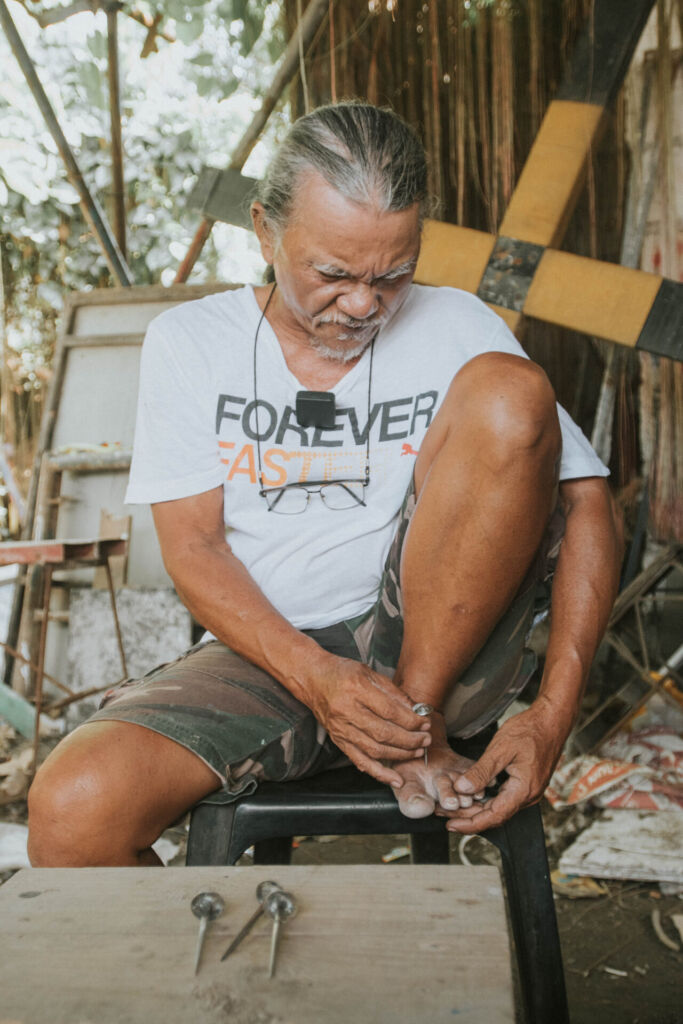
That was when he first made his panata (devotion) to crucify himself as a way of thanking God for his second life.
Then his daughter fell ill due to a serious asthma condition. He prayed to God and said that if he could heal her, he would devote another nine years to crucifixion.
Next was his wife, who developed a lump on her cheek. He committed more years in exchange for his wife’s health.
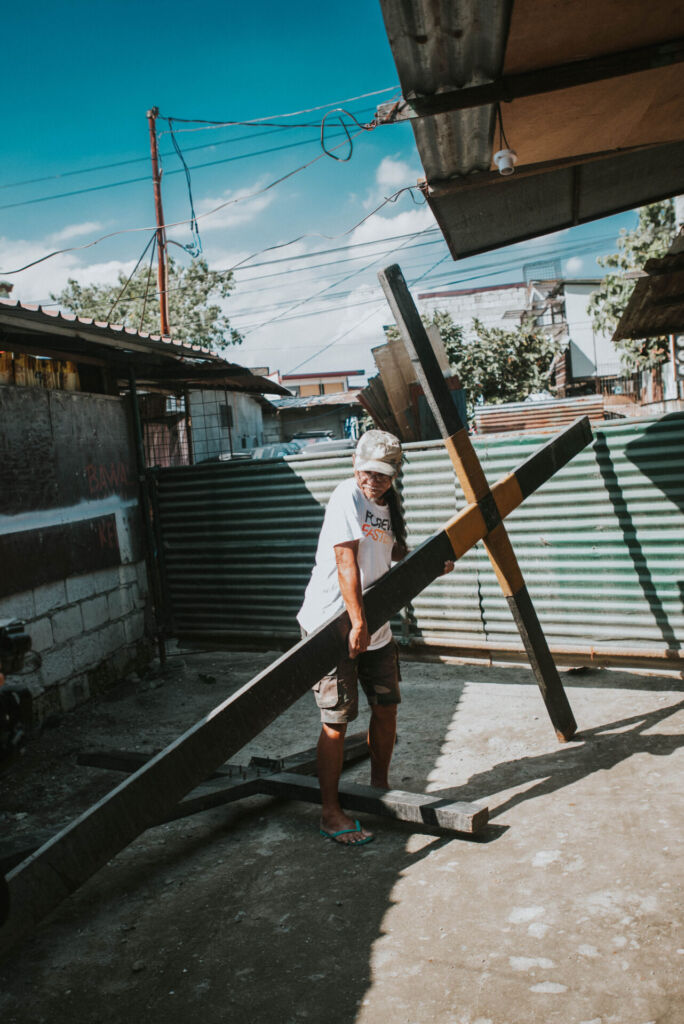
Vowing a panata is common for Filipino Catholics during this solemn season in exchange of atonement, or a prayer they want to be granted. Some will abstain from alcohol or sex during this period.
Yet others, like Enaje, are part of the enduring yet dwindling number of men who go to the extreme of participating in the yearly Senakulo. The traditional street drama, reenacting the days leading up to Christ’s death, takes place in the Philippines during Holy Week.
Different areas and regions will have their own interpretations of the tradition. In urban areas such as parts of Metro Manila, the street play takes place only on Good Friday, while nearby provinces will participate in a week-long reading of the Pasyon, an epic narrative on the life and death of Jesus Christ that dates back to the late 17th and 18th centuries.
San Pedro Cutud in Pampanga, however, is noteworthy for showcasing one of the most graphic depictions of the Senakulo as part of its Maleldo (Mahal na Araw; Holy Week) tradition, drawing crowds of 20,000, many of them local and foreign tourists, to see these real crucifixion scenes unfold.
While the season of Lent — a 40-day period of prayer, fasting, and almsgiving in preparation of Easter — is observed by Catholics around the world, the Philippines’ history of folk Catholicism has led to unique observances.
Vestiges of the country’s history of over 300 years of Spanish rule, where friars were tasked with evangelizing animist natives and subjugating its towns and villages, remain evident: 81 percent of the population identifies as Roman Catholic, based on the latest Philippine Statistics Authority survey. Stone churches, many of them constructed in the 19th century or earlier, continue to mark town plazas, or administrative centers, beside local government halls.
Rather than teach natives Spanish, the colonizer’s language, friars learned their native tongues and embraced their native ways, leading to some of the Philippines’ most enduring practices of folk Catholicism such as its Holy Week traditions.
While these practices have lasted for centuries, these community acts do not reflect the official views of Catholic church leaders in the Philippines. The Catholic Bishops Conference of the Philippines (CBCP) has repeatedly warned against “bloody” observances of Holy Week such as crucifixion and self-flagellation, saying that there was no need for Catholics to “share” in the suffering of Christ to showcase their devotion.
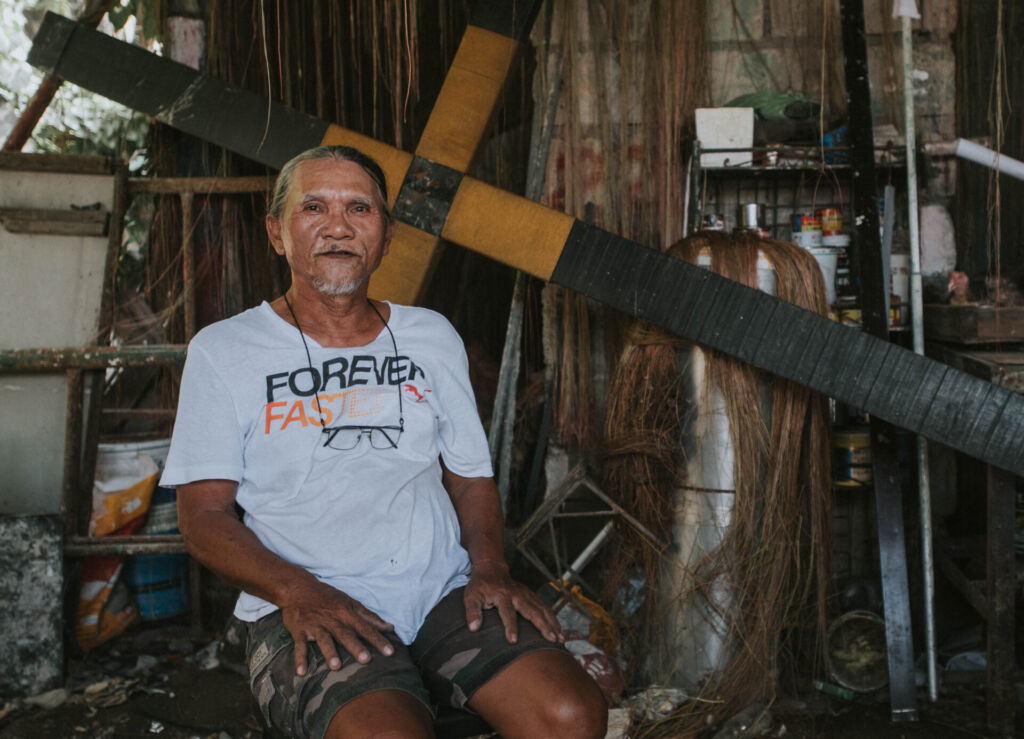
Former CBCP president Archbishop Socrates Villegas said, “It’s no longer necessary to shed blood because the shedding of blood was done by Jesus Christ for us. We don’t have to hurt ourselves anymore because we cannot add to the merit of Christ’s passion.”
Yet not even the admonishment of Catholic leaders can deter these folk traditions, given their importance to local communities. One event did, however: the COVID-19 pandemic. Local dioceses suspended Holy Week activities, including Palm Sunday and Easter Sunday masses, visita iglesia (the visiting of seven different churches to atone for one’s sins), and the Seven Final Words and Good Friday processions.
Similarly, the local government of San Fernando in Pampanga halted its renowned Senakulo and Maleldo observances amidst prevailing mobility restrictions. For Enaje, this meant missing his 35th, 36th, and 37th chances of getting nailed to the cross.
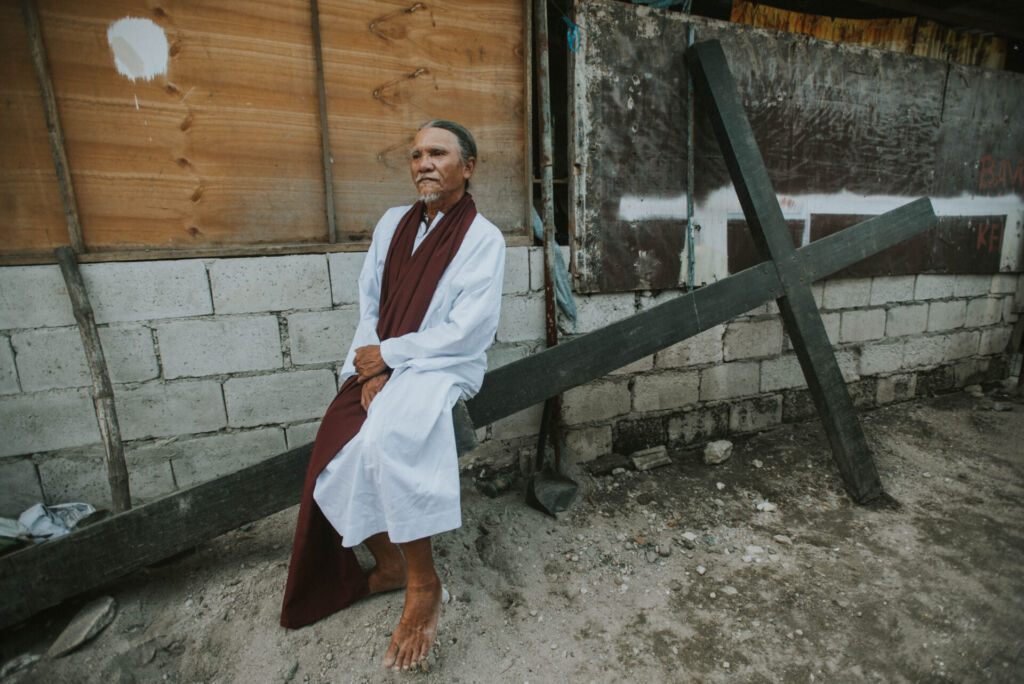
Enaje said he was glad when the local government announced it was resuming its Senakulo traditions as the Catholic Church also announced the return of its Holy Week activities as pandemic restrictions eased.
“We feel happy [here in San Pedro Cutud], especially the devotees, those who shed blood, because there are no more prohibitions. Everything will resume,” Enaje said.
That said, the 62-year-old penitent said he was seriously considering retirement after this year’s Holy Week. At his age, the weight of the cross, as well as the physical pain from the crucifixion and the beatings, were starting to take a toll on his body.
For what could be his final time on the cross, Enaje was devoting this year’s penance not to his health or to his family members’, but to those who have suffered during the pandemic that put an end to his yearly penance in the past three years.
“I devote this to the people who were affected by COVID. I ask God to take away this virus, as so many people have suffered during the pandemic,” he said.
Gerald Gloton is a photographer based in Pampanga, immersed in the art and culture scene of his home province as he explores the depths of his local subjects. His hometown, the city of San Fernando, is renowned for its celebrations of the life, passion, and death of Jesus Christ through its Giant Lantern Festivals and Maleldo (Holy Week) traditions. Gerald’s visual stories are reflective of the lights, shadows, and colors of life.
